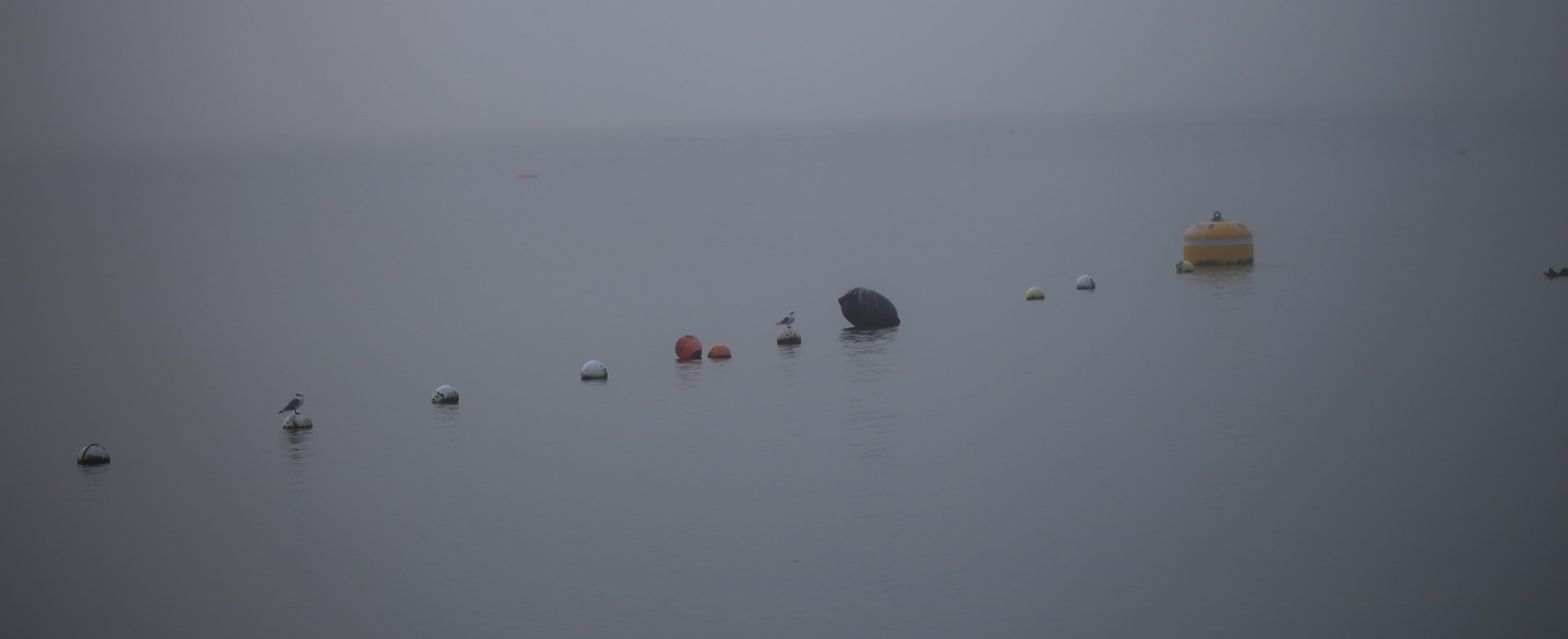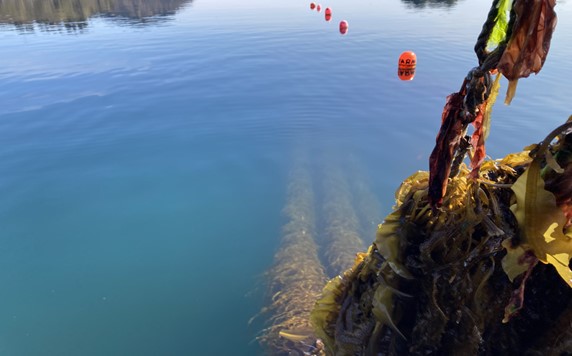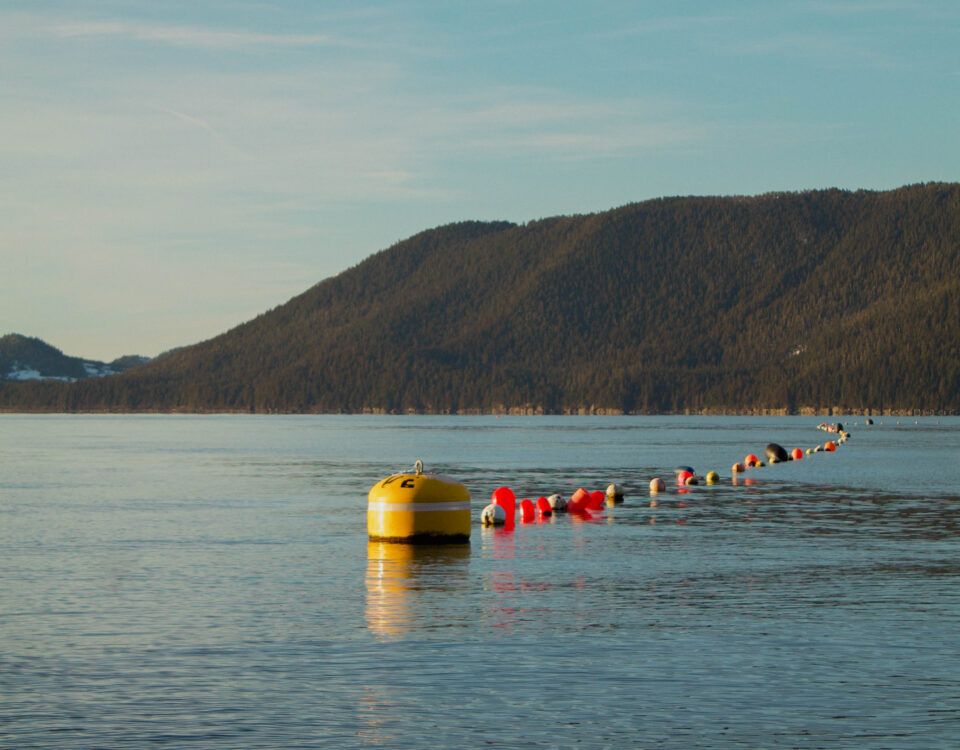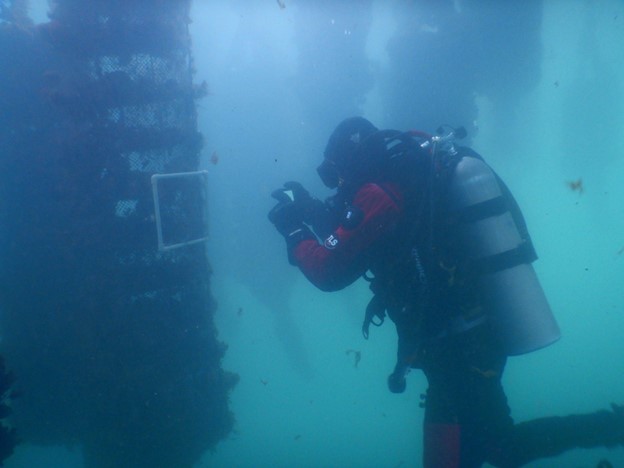Examining relationships between marine birds and mariculture development
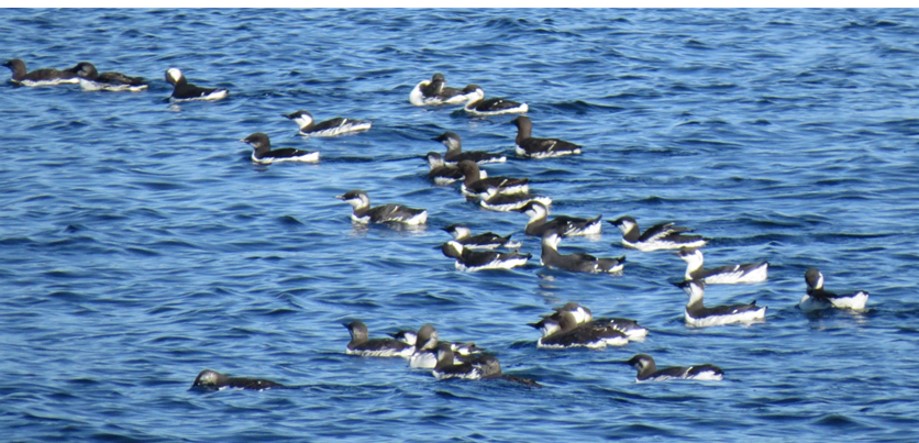
PROJECT
Examining relationships between marine birds and mariculture development
Mariculture Research and Restoration Consortium: Mariculture with Biological Communities, Marine Birds
Background
As kelp and oyster farming continues to expand along coastal Alaska, research is needed to understand if and how farm development and operation affect the marine ecosystem, including marine bird distribution and community composition.
Mariculture development could have positive, negative, or neutral impacts to marine bird populations. Because farms tend to be located in protected bays, which are also the preferred foraging habitat for over 30 species of marine birds in the northern Gulf of Alaska region, interactions between marine birds and farm operations are likely. Marine birds may be attracted to farms by the creation of novel habitat. For example, above-water farm infrastructure (e.g., buoys, platforms) can provide protected roosting habitat and act as elevated perches from which to search for prey below the surface. Additionally, the below-water infrastructure and farmed crop (e.g., kelp, oysters) may create novel habitat for forage fish and invertebrates on which marine birds prey. Conversely, mariculture operations could repel birds through increased disturbance and human presence.
This study aims to describe marine bird density, distribution, and community composition in relation to mariculture operations in Prince William Sound, Kodiak, and Kachemak Bay.
Methods
At-sea marine bird surveys are conducted along fixed, zig-zag transects (inclusive of nearshore/offshore, inner/outer bay, and distance to farm gradients) four times each year (winter, spring, summer, fall) in Prince William Sound, Kodiak, and Kachemak Bay, concurrent with marine mammal surveys. Within each region, transects are surveyed in three different bays representing areas with higher, intermediate, and lower (or zero) levels of mariculture development. We also complete stationary point surveys near farms and at a control reference site within each bay.
What We Will Learn
Understanding how mariculture farms impact marine bird habitat use is needed for both the mariculture industry and state and federal managers to inform sustainable expansion of mariculture development along coastal Alaska, and to evaluate the restoration potential of mariculture.
PRINCIPAL INVESTIGATORs
Anne Schaefer
Prince William Sound Science Center
aschaefer@pwssc.org
Collaborators
Mariculture Research and Restoration Consortium
RESEARCH PERIOD
2022-2031
FUNDING
Exxon Valdez Oil Spill Trustee Council
- This map shows the fixed, zigzag transects that are surveyed in Simpson, Sheep, and St. Matthews bays, Prince William Sound. Transects are also surveyed in Kachemak Bay and Kodiak, Alaska. Click image to enlarge.
- Birds resting on the buoys of a kelp farm.



